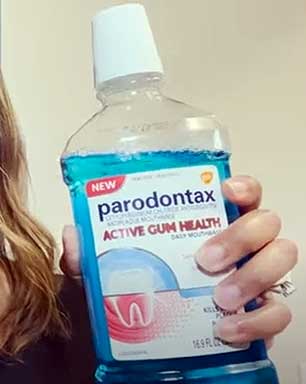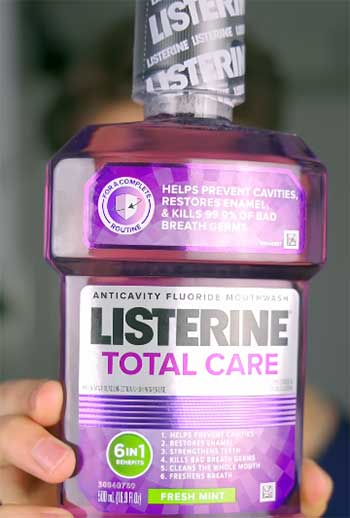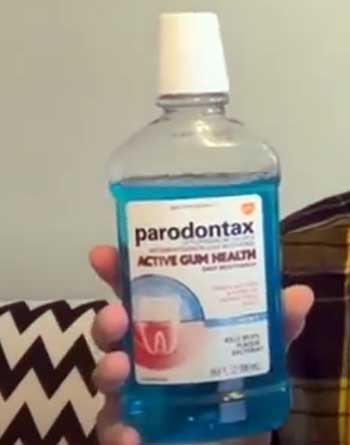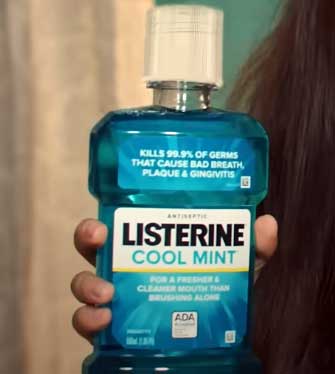I’ve always been a stickler for oral hygiene, but when my gums started bleeding during brushing, I knew it was time to rethink my routine. That’s when I stumbled upon Parodontax and Listerine, two heavyweights in the fight for gum health.
In this article, I’ll walk you through my experience comparing these products, weighing their pros and cons, and figuring out which one suits my needs—and maybe yours too.
From toothpaste to mouthwash, I’ll break down their features to help you make an informed choice for a healthier smile.
A Brief Comparison Table
| Feature | Parodontax | Listerine |
| Primary Product Type | Toothpaste (mouthwash available) | Mouthwash (toothpaste available) |
| Active Ingredients | Stannous fluoride (toothpaste), Cetylpyridinium Chloride (CPC) (mouthwash) | Essential oils (eucalyptol, menthol, thymol), alcohol (in some variants) |
| Primary Focus | Gum health, gingivitis prevention, plaque reduction | Antibacterial action, plaque reduction, breath freshening |
| Best For | Bleeding gums, early gum disease | General oral hygiene, bad breath, plaque control |
| Alcohol-Free Options | Yes (mouthwash) | Yes (select variants) |
| Taste | Herbal, slightly salty (toothpaste); minty (mouthwash) | Intense mint, varies by variant |
| Side Effects | Potential tooth staining, sensitivity | Burning sensation, possible dryness |
| Price Range (USD) | Toothpaste: $6–$8, Mouthwash: $7–$10 | Mouthwash: $5–$9, Toothpaste: $5–$7 |
| ADA Seal | Yes (some toothpaste variants) | Yes (some mouthwash variants) |
My Journey With Gum Health
A few months ago, I noticed my gums were looking redder than usual, and brushing left traces of blood in the sink. A quick visit to my dentist confirmed early signs of gingivitis, a wake-up call that pushed me to explore specialized oral care products.
Parodontax and Listerine kept popping up in recommendations, and I decided to try both to see which could help me get my gum health back on track.
Here’s what I learned about their approaches, ingredients, and effectiveness, along with the ups and downs of using them.
Understanding Parodontax: The Gum Specialist

Parodontax, developed by GSK, is a brand I initially associated with toothpaste, but I was surprised to find they also offer a mouthwash.
Marketed as a gum health champion, Parodontax targets issues like bleeding gums and gingivitis, which hit close to home for me.
Its toothpaste is formulated with 0.454% stannous fluoride, a key ingredient that not only strengthens teeth but also has antibacterial properties to tackle plaque and reduce gum inflammation.
The mouthwash, Parodontax Active Gum Health, uses Cetylpyridinium Chloride (CPC) to kill 99.9% of plaque bacteria, forming a protective shield to prevent further buildup.
What stood out to me was Parodontax’s focus on gum disease prevention. The toothpaste’s gritty texture, thanks to sodium bicarbonate (baking soda), felt like it was giving my teeth a deep clean, breaking apart plaque along the gumline.
I used Parodontax Complete Protection Toothpaste, which promises eight benefits, including gum health, cavity protection, and fresh breath. After two weeks, I noticed less bleeding when brushing, which was a relief.
The mouthwash, with its alcohol-free formula, was gentle and didn’t irritate my sensitive gums, though its minty flavor had a slightly medicinal aftertaste.
Pros of Parodontax
Using Parodontax felt like a targeted attack on my gum issues. Here are the standout benefits I experienced:
- Effective for Bleeding Gums: After two weeks of using Parodontax toothpaste, my gums bled significantly less. Studies back this up, showing a 63% reduction in sulcus bleeding index after four weeks of use compared to standard toothpaste.
- Antibacterial Action: The stannous fluoride in the toothpaste and CPC in the mouthwash work together to kill plaque bacteria and reduce inflammation, making it a solid choice for gingivitis.
- Alcohol-Free Mouthwash: The Parodontax mouthwash was gentle on my sensitive gums, avoiding the burn I sometimes felt with other rinses.
- Comprehensive Protection: The toothpaste offers multiple benefits, like enamel strengthening and cavity prevention, making it a versatile addition to my routine.
- Clinically Proven: Parodontax’s claims are supported by research, with studies showing it reduces plaque and gingival inflammation more effectively than some competitors.
Cons of Parodontax
Despite its benefits, Parodontax wasn’t perfect. Here’s what I found challenging:
- Unique Taste: The toothpaste’s herbal, slightly salty flavor took some getting used to. It’s not your typical minty freshness, and some might find it off-putting.
- Potential Staining: Stannous fluoride can cause temporary tooth staining, especially if you drink coffee or tea soon after brushing. I noticed slight discoloration, though regular brushing kept it in check.
- Gritty Texture: The sodium bicarbonate made the toothpaste feel abrasive, which was great for cleaning but sometimes felt too harsh for my sensitive teeth.
- Price Point: At $6–$8 for a tube of toothpaste and $7–$10 for mouthwash, Parodontax is pricier than some generic brands, which might deter budget-conscious users.
- Limited Mouthwash Reach: While effective, the mouthwash doesn’t cover as large an area as Listerine, which I found more thorough for overall oral hygiene.
Exploring Listerine: The Antibacterial Powerhouse

Listerine, a household name for over a century, is best known for its mouthwash, though it also offers toothpaste.
Its signature formula relies on a blend of essential oils—eucalyptol, menthol, thymol, and methyl salicylate—that pack a punch against bacteria.
Some variants, like Listerine Total Care, include fluoride for cavity protection, while others, like Listerine Gum Therapy, focus specifically on gum health.
I tried Listerine Gum Therapy and Listerine Cool Mint, both of which left my mouth feeling incredibly fresh but with a noticeable sting.
The first time I used Listerine, the intense minty burn caught me off guard.
It felt like my mouth was getting a full-on disinfection, which was both refreshing and a bit overwhelming.
Listerine’s claim to kill 99% of germs and reduce plaque was backed by the American Dental Association (ADA) seal on some variants, giving me confidence in its effectiveness.
After a week of twice-daily rinsing, I noticed my breath stayed fresh longer, and my gums felt less inflamed, though the burning sensation was a trade-off I had to get used to.
Pros of Listerine
Listerine brought a different energy to my oral care routine, with some clear advantages:
- Powerful Antibacterial Action: The essential oil blend in Listerine kills bacteria across the entire mouth, reducing plaque and gingivitis. Studies show it reduces bacterial counts by up to 19.75 colony-forming units after two weeks.
- Long-Lasting Freshness: My breath stayed fresh for hours after rinsing, which was a big win for social confidence.
- Variety of Formulations: From alcohol-free options to fluoride-enhanced versions, Listerine caters to different needs, like gum health or cavity prevention.
- ADA Seal of Approval: Many Listerine variants carry the ADA seal, reassuring me of their safety and efficacy.
- Wide Accessibility: Listerine is available in most stores and online, often at a lower price point ($5–$9 for mouthwash) than Parodontax.
Cons of Listerine
Listerine’s intensity came with some downsides:
- Burning Sensation: The alcohol in many Listerine variants caused a stinging feeling, which was uncomfortable, especially if I had mouth sores or sensitive gums.
- Potential Dryness: Prolonged use sometimes left my mouth feeling dry, likely due to the alcohol content in some formulas.
- Not Ideal for Cavities: While some variants include fluoride, Listerine’s primary focus is antibacterial action, not cavity prevention, which might leave a gap in your routine.
- Strong Taste: The intense mint flavor, while refreshing, was too much for me at times, especially in the morning.
- Less Targeted for Gum Disease: While effective, Listerine doesn’t focus as specifically on gum health as Parodontax, making it less ideal for severe gingivitis.
My Experience: Parodontax In Action

Brushing with Parodontax twice daily became a ritual I looked forward to, despite the unusual taste.
The gritty texture felt like it was scrubbing away plaque, and after a few days, my gums felt less tender.
I paired it with the Parodontax Active Gum Health Mouthwash, rinsing for 30 seconds after brushing.
The alcohol-free formula was a relief, as it didn’t irritate my gums, and I noticed a slight reduction in redness after a week.
However, I had to be mindful of staining—avoiding coffee for an hour after brushing helped keep my teeth looking clean.
One thing I appreciated was how Parodontax seemed designed for someone like me, dealing with early gum issues. The toothpaste’s stannous fluoride tackled bacteria at the gumline, where my problems were most pronounced. The mouthwash complemented this by reaching between teeth, though I wished it had a stronger minty kick for that fresh-breath boost.
Overall, Parodontax felt like a focused solution for my gingivitis, but the taste and texture took some adjustment.
My Experience: Listerine’s Full-Mouth Clean

Rinsing with Listerine was like hitting the reset button on my mouth.
The Cool Mint variant left a powerful, clean sensation, though the burn was intense at first.
I tried Listerine Gum Therapy for a more targeted approach, and it did reduce gum inflammation, but the alcohol content made my mouth feel dry after a few days.
Switching to an alcohol-free version, like Listerine Zero, was a game-changer for comfort, though it lacked the same punchy freshness.
Listerine’s strength was its ability to cover every nook and cranny of my mouth, something I felt Parodontax’s mouthwash couldn’t match.
It was great for tackling bad breath, especially after a garlic-heavy meal, and I appreciated the variety of formulations.
However, for my specific gum issues, it felt less precise than Parodontax, more like a general oral health booster than a gingivitis specialist.
Head-to-Head: Which Wins For Gum Health?
Comparing Parodontax and Listerine is like choosing between a sniper and a shotgun. Parodontax is precise, targeting gum health with stannous fluoride and CPC, ideal for those with bleeding gums or early gum disease.
Listerine, with its broad-spectrum antibacterial action, is a versatile all-rounder, great for overall oral hygiene and fresh breath but less focused on severe gum issues.
In my case, Parodontax edged out slightly because my primary concern was bleeding gums. After a month, my gums were noticeably healthier, with less bleeding and swelling.
Listerine, while effective at reducing plaque and freshening breath, didn’t seem to address my gumline issues as directly. However, combining the two—brushing with Parodontax and rinsing with Listerine—gave me the best of both worlds: targeted gum care and a comprehensive clean.
How To Use Them Together?
If you’re torn between the two, consider integrating both into your routine, as I did. Here’s what worked for me:
- Brush with Parodontax: Use Parodontax toothpaste twice daily, focusing on the gumline to tackle plaque and bacteria. Rinse thoroughly with water to avoid interactions with the mouthwash.
- Rinse with Listerine: After brushing, rinse with Listerine for 30 seconds to kill bacteria in hard-to-reach areas and freshen breath. Opt for an alcohol-free variant if you have sensitive gums.
- Floss Daily: Neither product replaces flossing, which is crucial for removing plaque between teeth.
- Visit Your Dentist: If symptoms persist, see a dentist to address underlying issues like advanced gum disease.
This combo maximized plaque reduction and gum health while keeping my breath fresh. Just be sure to wait a few minutes after brushing with Parodontax before using Listerine, as toothpaste ingredients can reduce mouthwash efficacy.
Cost And Accessibility
Price matters when you’re committing to a daily product. Parodontax toothpaste runs about $6–$8 for a 3.4-ounce tube, and the mouthwash is around $7–$10 for 16.9 ounces.
Listerine is slightly more budget-friendly, with mouthwash bottles (16–33.8 ounces) costing $5–$9 and toothpaste around $5–$7. Both brands are widely available at pharmacies, supermarkets, and online, but Listerine’s broader range of variants makes it easier to find a formula that suits your needs.
Which Should You Choose?

After weeks of testing, I found Parodontax to be my go-to for tackling bleeding gums and early gingivitis.
Its targeted approach made a tangible difference in my gum health, though the taste and texture required some getting used to.
Listerine, on the other hand, was my pick for a quick, refreshing clean, especially when I needed to banish bad breath.
If your gums are in good shape and you’re after a general oral health boost, Listerine’s versatility might be enough. But if you’re dealing with gum issues like I was, Parodontax is the stronger contender.
Ultimately, your choice depends on your oral health goals. Are bleeding gums your main concern? Go with Parodontax. Want a powerful, all-over clean with fresh breath?
Listerine’s your friend. Better yet, use them together for a comprehensive approach. Whatever you choose, stick to a consistent routine and check in with your dentist to keep your smile in top shape.
Frequently Asked Questions (FAQ)
Yes, Parodontax Active Gum Health Mouthwash is effective for reducing plaque and preventing gum disease, thanks to its CPC formula. It’s alcohol-free, gentle on gums, and clinically proven to improve gum health.
It depends on your needs. For gum disease, Parodontax or chlorhexidine-based mouthwashes may be more targeted. For overall oral hygiene and breath freshening, Listerine’s essential oil blend is hard to beat.
Parodontax Active Gum Health and Listerine Gum Therapy are both excellent, but chlorhexidine-based mouthwashes (prescription) are often considered the gold standard for severe gum disease.
Listerine can help reduce plaque and gingivitis, but for advanced periodontal disease, consult your dentist. They may recommend a prescription mouthwash or professional treatment alongside Listerine.
Wrapping Up
You’ve got enough on your plate without worrying about bleeding gums or bad breath, so choosing the right oral care product is key. My journey with Parodontax and Listerine showed me that both have their strengths—Parodontax for laser-focused gum health and Listerine for a powerful, all-mouth clean.
By understanding their pros and cons, you can pick the one that fits your needs or combine them for maximum impact. Keep brushing, rinsing, and flossing, and you’ll be on your way to a healthier smile in no time.
